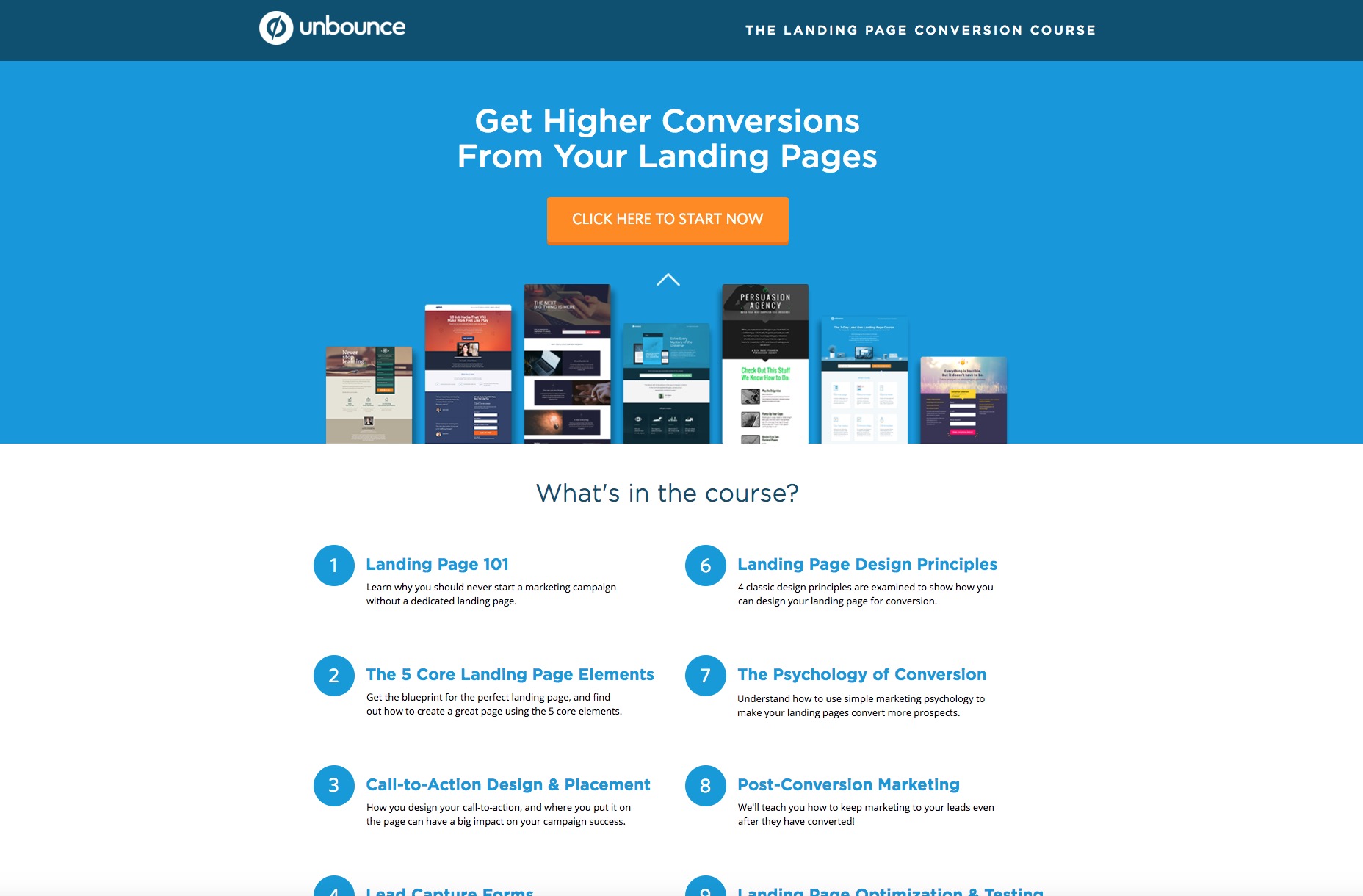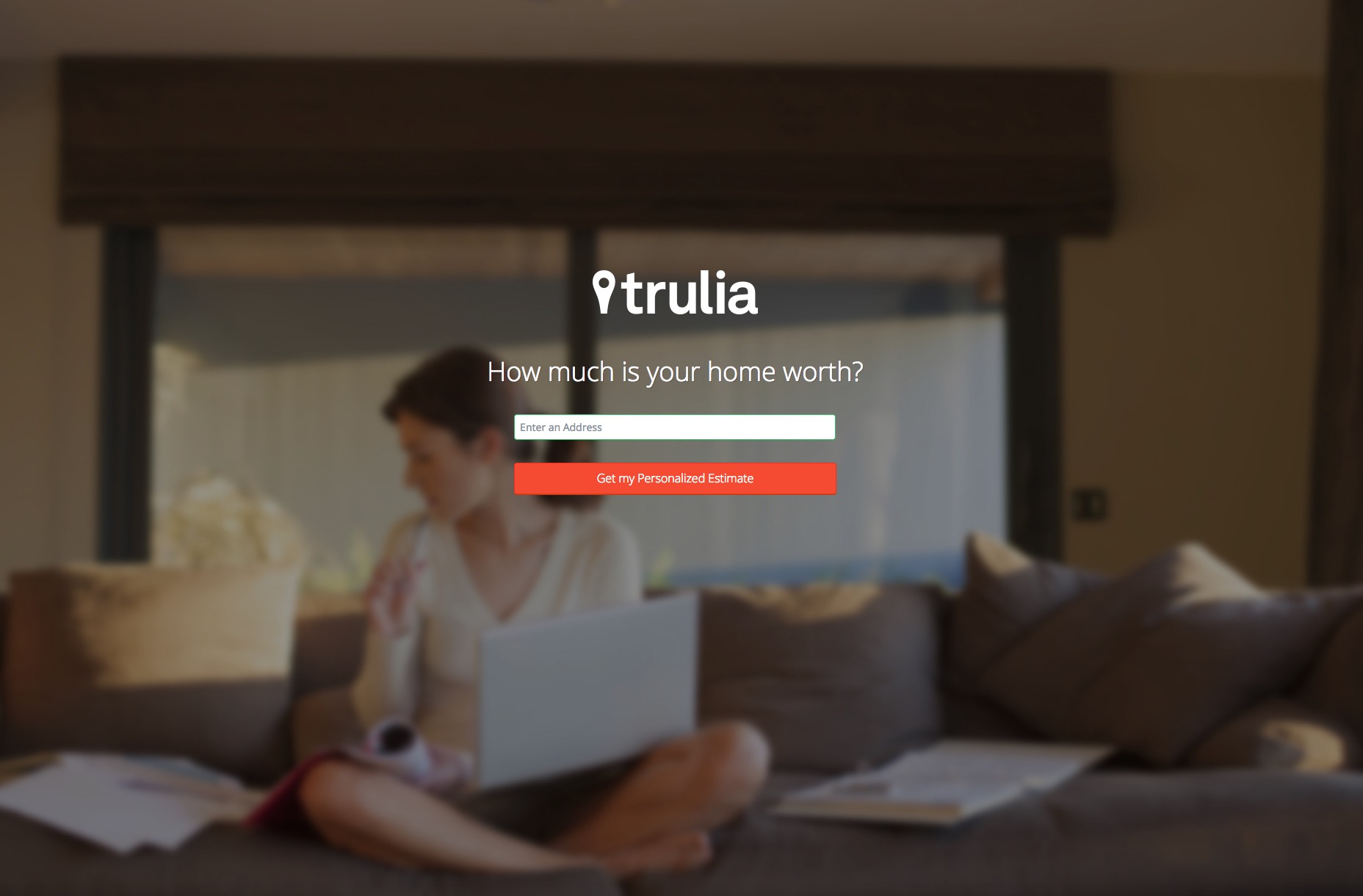Choice paralysis: 3 ways the number of choices impacts conversions

Friction
Friction is defined as anything that upsets or frustrates a user’s easy path to conversions on the landing page. Friction can be anything from an unattractive site that simply drives off visitors because it looks abysmal to a total lack of clarity regarding the ultimate page goal of the landing page. Of course, friction, more often than not, can also be caused by something like having too many choices on the page. When this occurs, as we saw in the jam experiment referenced above, visitors tend to abandon the purchase because they’re suffering from choice overload. Friction is poison to conversions, so anything you can do to keep it to a minimum is necessary. On a landing page, that means removing choices on the page, which can include: • No navigation menu at all• Only one call to action button
• No contact information Unsurprisingly, Unbounce (the specialists in landing-page design) show us how to design a landing page that’s free of friction. On their landing page for the landing-page conversion course, they’ve done away with ANYTHING at all that can cause friction to the goal of the page, which is people clicking the gigantic call to action button to begin reading the chapters in the course. Note how you absolutely can’t click on anything on the page except for the CTA, or the specific chapter headings. Now that boosts conversions.

Interference with the information architecture
Information architecture is defined as a site’s information backbone that essentially informs the entire user interface of a site. In other words, what your users see on the screen, or what they should see on the screen, is a direct result of the IA. Awesome IA means that the whole structure and organization of a site that define the relationship between your content and usability are excellent, too. In the case of a landing page, this means the content has to support the usability (read: visitors being able to efficiently and easily figure out what’s expected of them on the page). If your users can’t quickly determine what they’re supposed to do on the page because there are too many choices, then the content is the problem, and it ends up hampering the relationship between the content and usability. That’s another way of how too many choices can create an adverse impact on a site’s conversions. If users land on a page, yet their flow is interrupted due to excessive choices, chances are slim that they’ll complete the page’s goal, which is to convert. Take a look at this Wistia landing page. It’s information architecture is excellent and is a model of what you should be aiming for in IA. The page goal is clearly to sign up for a Wistia account, which is made clear by the big, noticeable headline. To facilitate that, there’s a giant form right underneath with a big call to action button to finish the purpose of the page’s content. In other words, when visitors look at this page, it’s impossible that they won’t know what to do, and that’s because the IA is on point. There’s to no other choice than to fill out the form!
Cognitive load
Cognitive load is usually defined as the total amount of mental processing power necessary to use a site. It impacts how easily (or hard) users can find content and complete certain tasks. It just stands to reason that, when you have more choices on a landing page, the cognitive load increases. Now, this is where it gets really interesting. Cognitive load can be categorized into two groups: intrinsic and extraneous. Here’s how the two are defined: • Intrinsic - The effort of taking in new information and being mindful of its own goals.• Extraneous - The mental processing that uses up mental resources, yet doesn’t contribute to helping users understand site content. Naturally, when you have too many choices on a landing page, you increase the extraneous cognitive load on users because you’re subjecting them to choices that don’t help them understand the landing page’s content. For example, if the landing page has internal links or a navigation menu, then these choices simply consume a user’s mental processing without helping him understand the page’s content. That would make inclusion of anything other than the bare minimum, the CTA, a problem. With too much cognitive load, users can’t therefore concentrate as efficiently on the ultimate goal of the page, which is to convert, thus driving conversions down. For an example of a landing page that doesn’t subject users to extraneous cognitive load, we look at Trulia. As far as cognitive load goes, this landing page is the perfect epitome of that. The page’s only goal is to get visitors to enter an address, so the site can look up its worth for them. That means there’s no extraneous cognitive load on this page at all! The only actions are: a) Enter your address
b) Click on the call to action button to get your answer The only mental process users undertake is to complete the goal of the page, which they can do in a matter of seconds.

Excessive choices and conversion kills
Psychology is a huge part of web design, including designing a landing page for your clients. You have to understand how users behave on the page when they’re faced with too many choices. Even a few choices can be too many when you consider that any choice that doesn’t support the page goal is excessive and therefore contributes to lower conversions. Case studies like this one—where lessening choices on a landing page boosted conversions by 19%—show that conversions are hurt when you have too many choices on the page. It’s best not to confuse your visitors or altogether tempt them to click away from the call to action on the page. When you design to have only minimal choices, you’re designing for higher conversions and landing-page success!Marc Schenker
Marc’s a copywriter who covers design news for Web Designer Depot. Find out more about him at thegloriouscompanyltd.com.
Read Next
3 Essential Design Trends, November 2024
Touchable texture, distinct grids, and two-column designs are some of the most trending website design elements of…
20 Best New Websites, October 2024
Something we’re seeing more and more of is the ‘customizable’ site. Most often, this means a button to swap between…
Exciting New Tools for Designers, October 2024
We’ve got goodies for designers, developers, SEO-ers, content managers, and those of you who wear multiple hats. And,…
15 Best New Fonts, September 2024
Welcome to our roundup of the best new fonts we’ve found on the web in the previous four weeks. In this month’s edition…
By Simon Sterne
3 Essential Design Trends, October 2024
This article is brought to you by Constantino, a renowned company offering premium and affordable website design
You…
A Beginner’s Guide to Using BlueSky for Business Success
In today’s fast-paced digital world, businesses are always on the lookout for new ways to connect with their audience.…
By Louise North
The Importance of Title Tags: Tips and Tricks to Optimize for SEO
When it comes to on-page SEO, there’s one element that plays a pivotal role in both search engine rankings and user…
By Simon Sterne
20 Best New Websites, September 2024
We have a mixed bag for you with both minimalist and maximalist designs, and single pagers alongside much bigger, but…
Exciting New Tools for Designers, September 2024
This time around we are aiming to simplify life, with some light and fast analytics, an all-in-one productivity…
3 Essential Design Trends, September 2024
September's web design trends have a fun, fall feeling ... and we love it. See what's trending in website design this…
Crafting Personalized Experiences with AI
Picture this: You open Netflix, and it’s like the platform just knows what you’re in the mood for. Or maybe you’re…
By Simon Sterne
15 Best New Fonts, August 2024
Welcome to August’s roundup of the best fonts we’ve found over the last few weeks. 2024’s trend for flowing curves and…
By Ben Moss















